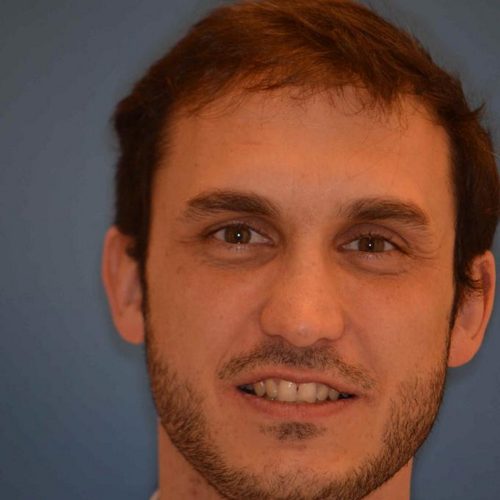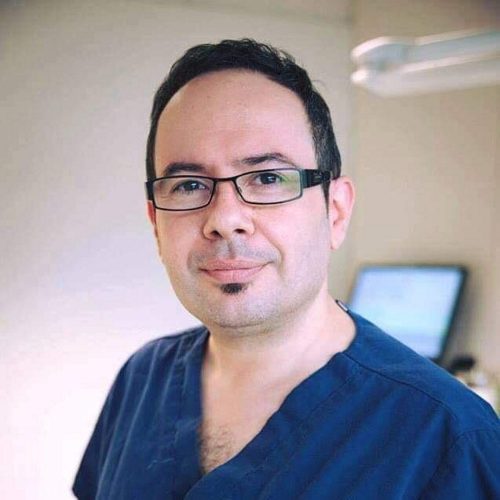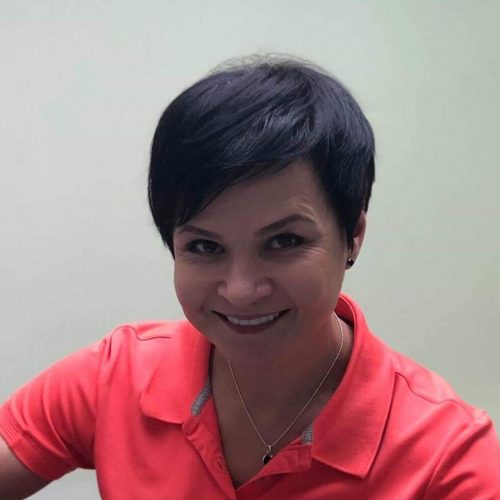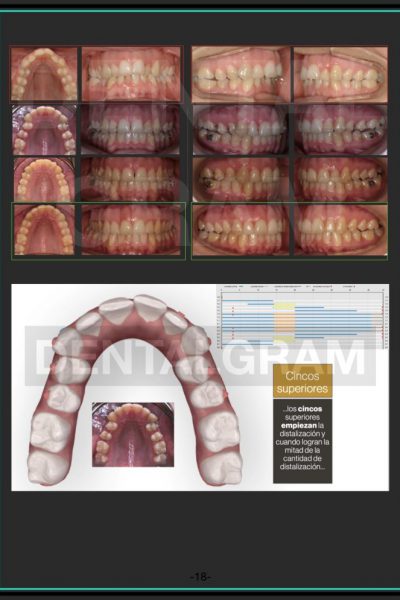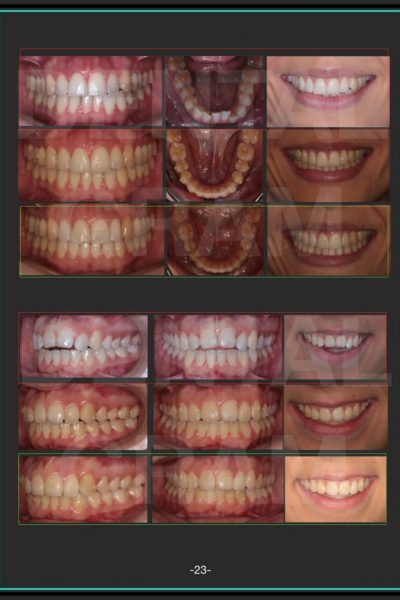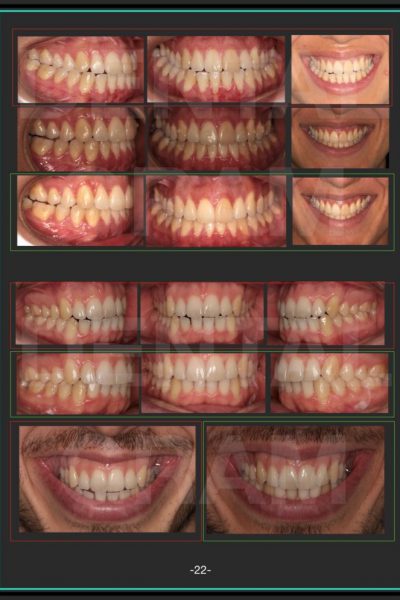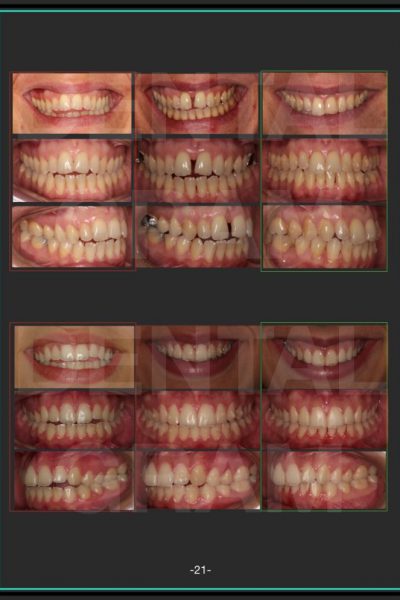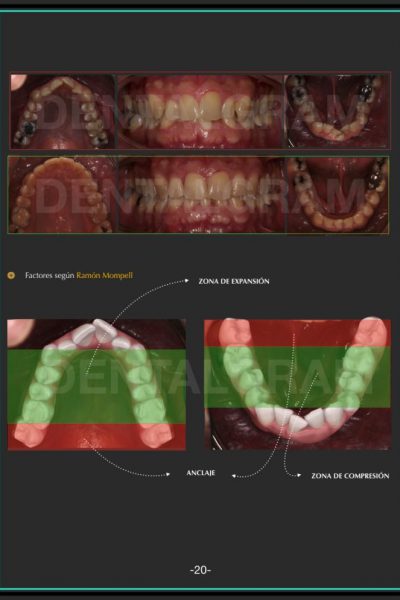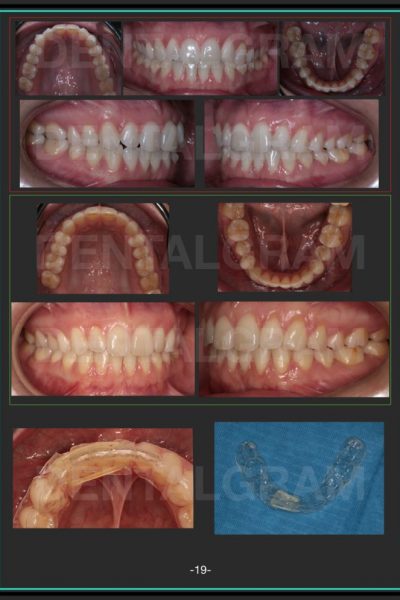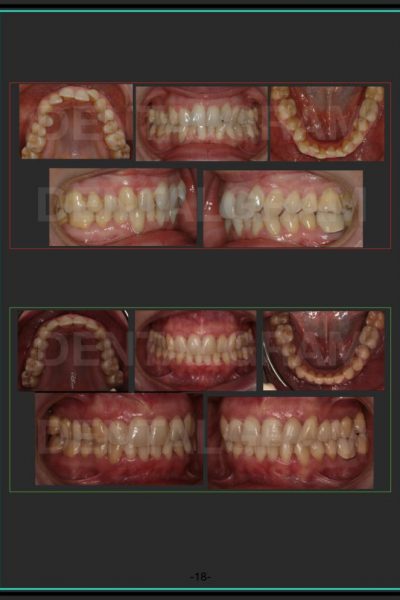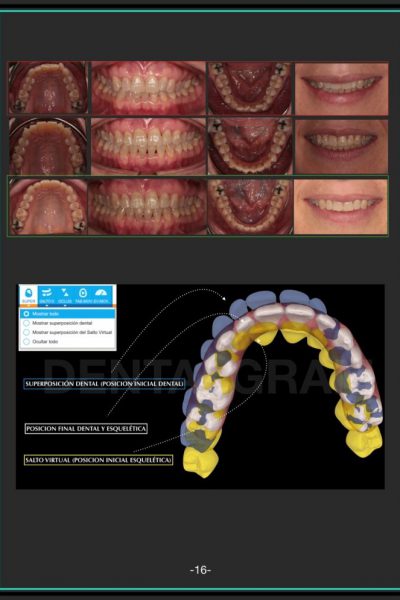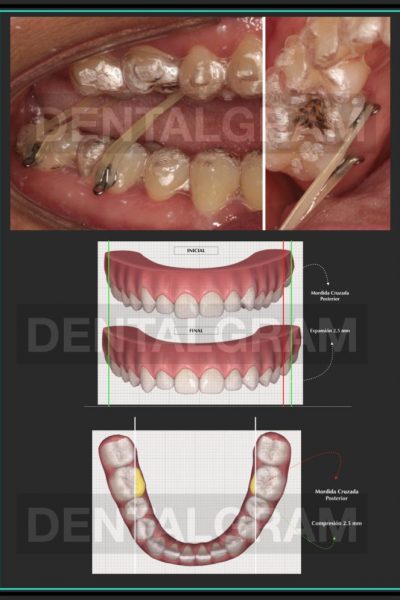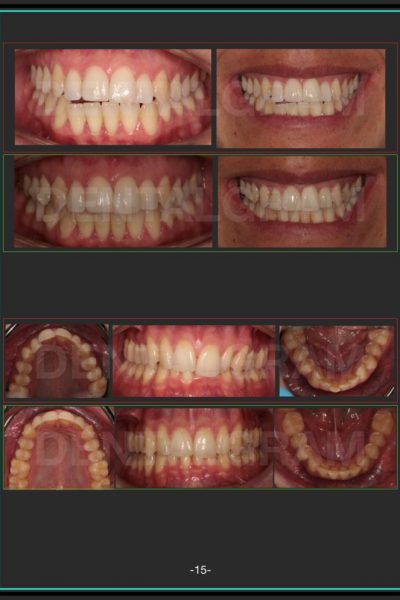STRIPPING Course
STRIPPING Course
STRATEGY, PLANNING AND PERFORMANCE OF STRIPPING
¿Ready for the Challenge?
Protocols to master the STRIPPING procedure
1. Introduction to the course of Stripping strategy, planning and performance.
2. Scan strategy related to IPR. Intraoral iTero / 3shape / Carestream scanner, as the
most accurate method. Scanning technique before refinement to optimize the result.
3. IPR with Aligners vs IPR with fixed appliances: Differences between stripping when
using fixed appliances and when aligners are used.
4. Indications / contraindications of the IPR. Adults and children.
5. Ideal time to perform the IPR
6. Ways to get space in the archway. IPR vs expansion vs proinclination vs extraction.
7. Mistakes and successes in the strategy
1. Advantages and disadvantages of the IPR. Classic and modern IPR concept.
2. IPR planning. Access from lingual and palatine vs access from vestibular.
3. Clinical stripping VS virtual stripping: dental anatomy as the basis for the correct execution of the IPR.
4. IPR limits. Dental structure of posterior teeth and anterior teeth. Security.
5. Protection when performing the IPR. Mouth and gingival protectors for patients. Visual protectors for the clinician.
6. Stripping as a multidisciplinary tool. use of stripping in different dental specialties.
7. Mistakes and successes in planning
1. Materials and instruments used for the IPR.
2. IPR check. Use of millimeter gauges to quantify the IPR performed. Eye training as the most accurate measure.
3. Two-step technique: IPR + aesthetic recontorneo. Method to avoid black triangles.
4. Dialogue strategy with the patient
5. Tips and recommendations.
6. Mistakes and successes in the execution.
1. Introduction to the course of Stripping strategy, planning and performance.
2. Scan strategy related to IPR. Intraoral iTero / 3shape / Carestream scanner, as the
most accurate method. Scanning technique before refinement to optimize the result.
3. IPR with Aligners vs IPR with fixed appliances: Differences between stripping when
using fixed appliances and when aligners are used.
4. Indications / contraindications of the IPR. Adults and children.
5. Ideal time to perform the IPR
6. Ways to get space in the archway. IPR vs expansion vs proinclination vs extraction.
7. Mistakes and successes in the strategy
1. Advantages and disadvantages of the IPR. Classic and modern IPR concept.
2. IPR planning. Access from lingual and palatine vs access from vestibular.
3. Clinical stripping VS virtual stripping: dental anatomy as the basis for the correct execution of the IPR.
4. IPR limits. Dental structure of posterior teeth and anterior teeth. Security.
5. Protection when performing the IPR. Mouth and gingival protectors for patients. Visual protectors for the clinician.
6. Stripping as a multidisciplinary tool. use of stripping in different dental specialties.
7. Mistakes and successes in planning
1. Materials and instruments used for the IPR.
2. IPR check. Use of millimeter gauges to quantify the IPR performed. Eye training as the most accurate measure.
3. Two-step technique: IPR + aesthetic recontorneo. Method to avoid black triangles.
4. Dialogue strategy with the patient
5. Tips and recommendations.
6. Mistakes and successes in the execution.
HANDS-ON
IPR PLANNING
Different cases will be carried out to see how the strategy and planning are in each case.
INTER-PROXIMAL REDUCTION (IPR)
Different types of IPR will be performed on biomodels specially prepared with different types of
crowding to improve the IPR technique.
Different types of IPR systems from manual, rotary and oscillating systems will be tested
DR. RAMÓN MOMPELL
- Active member of the research team in the Craniofacial Growth and Development Division. Dep. Orthodontics, University of California at Los Angeles (UCLA)
- Professor at the University of Ajou, Seoul, Korea
- Professor at the University of Coimbra, Portugal.
- Master Orthodontics and Craniofacial Orthopedics. Jiménez Díaz Foundation Hospital. Madrid
- Clinical residency, Department of Orthodontics, University of Sao Paulo (USP), Brazil
- Invisalign Diamond II
SPEAKER OF THE COURSE
Dr. R. Mompell
- Active member of the research team in the Craniofacial Growth and Development Division. Dep.
Orthodontics. University of California at Los Angeles (UCLA) - Professor at the University of Ajou, Seoul, Korea.
- Professor at the University of Coimbra, Portugal.
- Master’s Degree in Orthodontics and Craniofacial Orthopedics. Jiménez Díaz Foundation Hospital. Madrid.
- Clinical residence, Department of Orthodontics, University of Sao Paulo (USP), Brazil.
- Invisalign Diamond II
Orthodontics. University of California at Los Angeles (UCLA)
Hospital. Madrid.
COURSE DETAILS
Modality
Theoretical-practical course. Online
Teachers
Dr. Ramón Mompell
Dates
Coming soon
Places available
Language
Spanish 🇪🇸
Place
Dentalgramacademy.com (online)
Schedule
Access 24 hours to the content
Price
350€
Payment Methods
Single payment: € 350
CLINICAL CASES
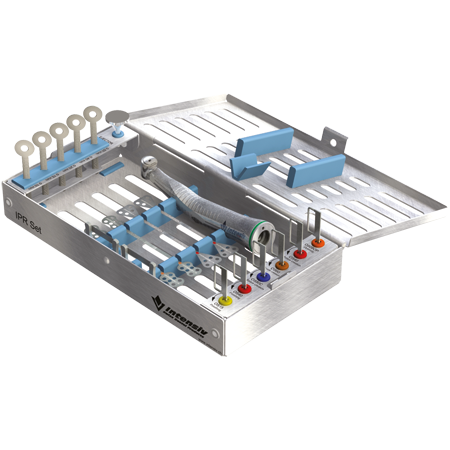
INTENSIVE SYSTEM for IPR
- Facilitates the rapid opening of closed interdental contacts.
- Allows to calibrate and controll reduction of teeth.
- Allows the precise and polished finish of the enamel.
- Ensures the health of soft tissues.
- Maintains patient comfort thanks to the high speed of oscillating movements.
FREQUENT QUESTION
To enroll in the Invisalign course, you must fill out the form with your data in the Registration area and the next process will begin.
1. Complete the Registration form
2. You will receive an email with the confirmation of your registration
3. Proceed to the payment in the DENTALGRAM FORMACIÓN:
IBAN account number: ES02 2038 1109 3860 0080 6095
SWIFT / BIC: CAHMESMMXXX
BANCO: BANKIA
4. Send proof of payment to facturacion@formaciondentalgram.com
A single payment of € 350. The total payment of the course must be paid before the beginning of it.
Title awarded by the Dentalgram training center.
The course will be in Spanish.
TESTIMONIALS
